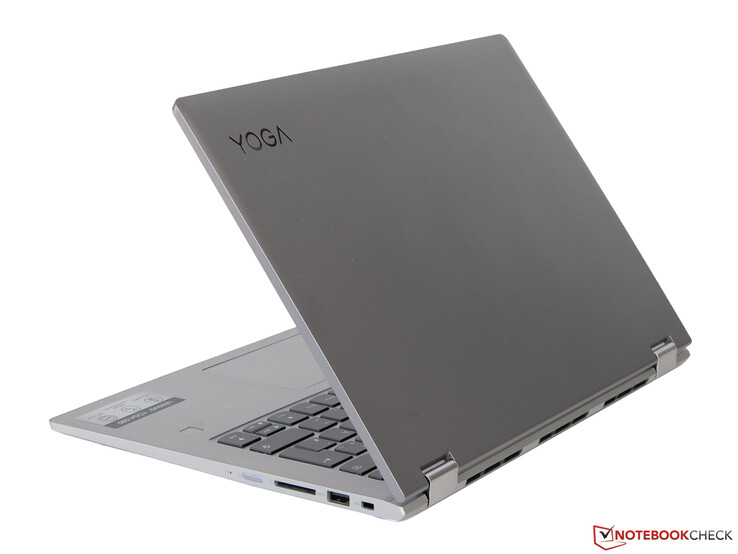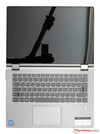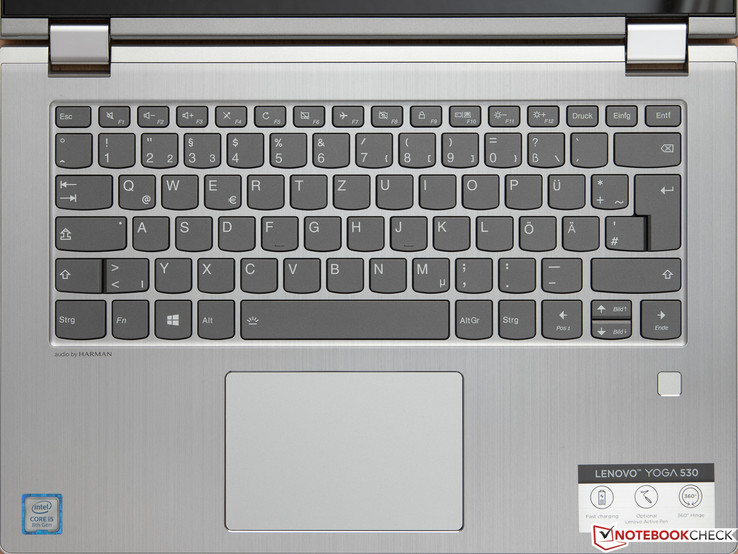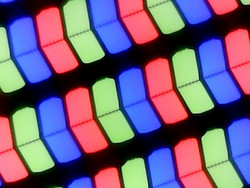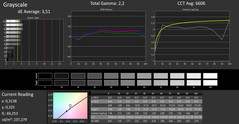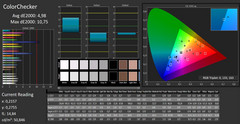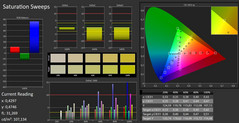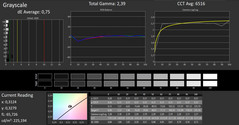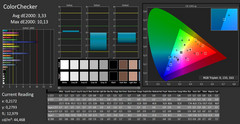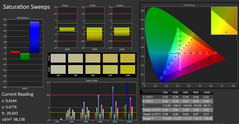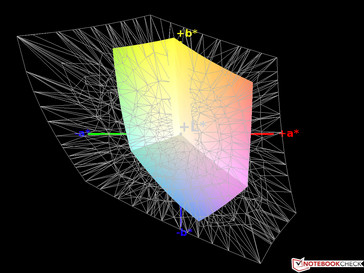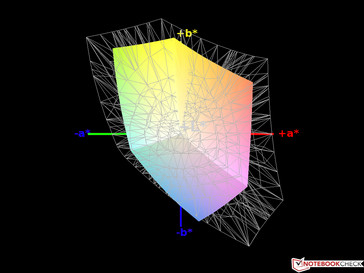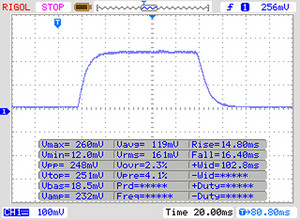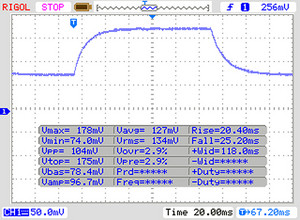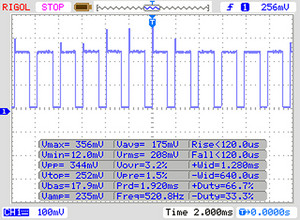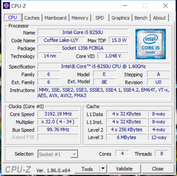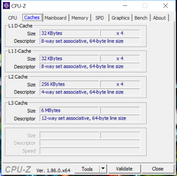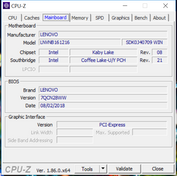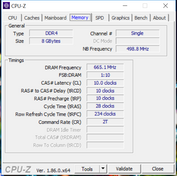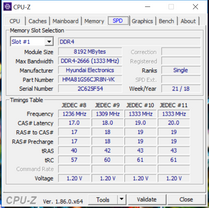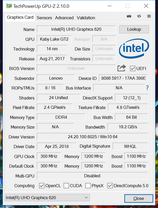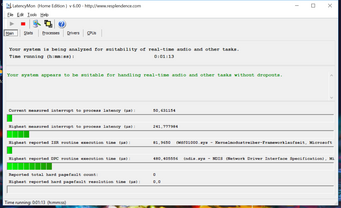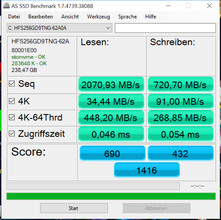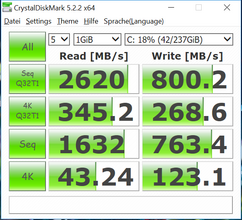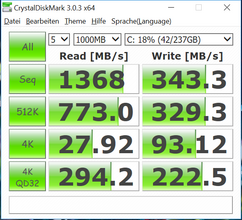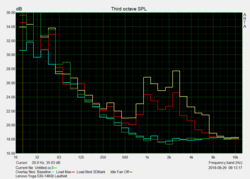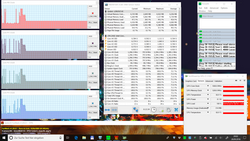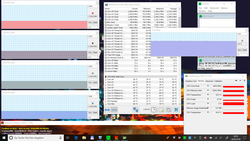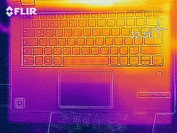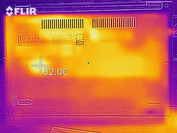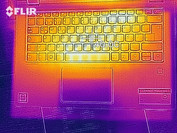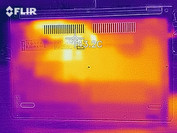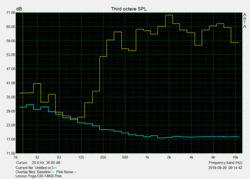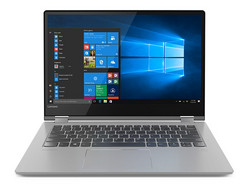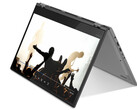Lenovo Yoga 530-14IKB (i5-8250U, 8 GB, 256 GB SSD) Convertible Review

The new Lenovo Yoga 530-14IKB is a 14-inch budget or mid-range convertible, depending on the equipment variant. The cheapest option on Lenovo’s online shop at the time of writing costs 599 Euros (~$689), which rises to 1,099 Euros (~$1,264) for the most expensive version. Lenovo lists their equipment options under its “Specifications” section. Our test device is the 81EK00CWGE, which is a commercially available model. Lenovo introduced the 530 series in February 2018; the series has no direct predecessor.
Our test device currently costs around 800 Euros (~$920) and has a quad-core Intel Core i5-8250U processor, Intel UHD Graphics 620, 8 GB RAM and a 256 GB SSD. The device does not include the optional Nvidia GeForce MX130 GPU so, like many other 530-series models, this model is aimed at office users. The 14-inch IPS display has a glossy finish and has a 1920x1080 native resolution. The 1.6 kg device also has a 45 Wh battery, a TPM 2.0 chip and a fingerprint sensor. Our test device has Windows 10 Home preinstalled too.
We have chosen to compare the Yoga 530-14IKB against other 14-inch convertible devices with comparable hardware that are equivalently priced. Our comparison devices are:
Case
The Yoga 530-14IKB has a silver case that has a blue shimmer to it. According to Lenovo, the case is made from aluminum, which feels better to the touch and looks more premium than plastic equivalents. Lenovo has gone with a two-tone effect with the display lid having a brushed metal finish that is a darker silver than the rest of the device. The entire device also has a matte finish that does not attract fingerprints or smudges. Lenovo has kept the design minimal with the top case not even having a tapered edge to give the device a unibody-look. The display lid’s only visual accents are its Lenovo-typical hinges and the Yoga logo.
The case looks solid, but we could twist it by applying a fair amount of pressure; the case creaks too. By contrast, the massive and heavy display lid is unusually stable and is not susceptible to our best efforts at twisting it. One-handed opening is difficult though as there is no indent to get a purchase on the lid with and the hinges are incredibly tight. Attempts at opening the device with one hand result in the base lifting too. Unfortunately, the tight hinges do not prevent the display from wobbling. Any jerky movements make the display shake for a few seconds, which is rather disappointing given how strongly the hinges bind the display to the base unit.
Overall, our test device is well-constructed with no irregular gaps or protruding edges. The front edge of the base unit is noticeably sharp though, which we would have preferred to have been smoother.
It is unlikely that the convertibles to which we refer in this review will be particularly light, compact or cost-effective given their relatively low starting prices. Consequently, all devices weigh between 1.5 kg and 1.7 kg with the Yoga 530 sitting in the middle of the pack at 1.6 kg. The ASUS VivoBook is the lightest of our comparison devices, and it also has the smallest footprint. However, all four devices are practically identically sized, and the differences are so small that it is not worth going into any further detail.
Connectivity
The Yoga 530 has the minimum standard of ports for a device released in 2018. We did not expect flagship-level connectivity though given the device’s starting price. Our test device has three USB 3.0 and 3.1 ports, the latter of which is USB Type-C.
All ports are located towards the back of the left and right-hand sides of the device, so no cables should get in your way when you're working at a table or desk.
SD Card reader
The Yoga 530 has a USB 2.0 SD card reader, which is the same speed as the readers in the VivoBook Flip 14 and the Spin 3. We conducted our SD card tests with our Toshiba Exceria Pro SDXC 64 GB UHS-II reference card. In these tests, our test device averaged under 30 MB/s, which puts it second in our comparison table but well below average. By contrast, the HP ProBook x360 has a USB 3.0 reader and correspondingly achieves at least 50 MB/s faster transfer speeds in both tests.
| SD Card Reader | |
| average JPG Copy Test (av. of 3 runs) | |
| HP ProBook x360 440 G1 (Toshiba Exceria Pro M501 microSDXC 64GB) | |
| Average of class Convertible (28.1 - 209, n=23, last 2 years) | |
| Lenovo Yoga 530-14IKB-81EK00CWGE (Toshiba Exceria Pro SDXC 64 GB UHS-II) | |
| Asus VivoBook Flip 14 TP412UA-DB51T (Toshiba Exceria Pro SDXC 64 GB UHS-II) | |
| Acer Spin 3 SP314-51-548L (Toshiba Exceria Pro SDXC 64 GB UHS-II) | |
| maximum AS SSD Seq Read Test (1GB) | |
| Average of class Convertible (28.9 - 253, n=22, last 2 years) | |
| HP ProBook x360 440 G1 (Toshiba Exceria Pro M501 microSDXC 64GB) | |
| Lenovo Yoga 530-14IKB-81EK00CWGE (Toshiba Exceria Pro SDXC 64 GB UHS-II) | |
| Asus VivoBook Flip 14 TP412UA-DB51T (Toshiba Exceria Pro SDXC 64 GB UHS-II) | |
| Acer Spin 3 SP314-51-548L (Toshiba Exceria Pro SDXC 64 GB UHS-II) | |
Communication
Our test device has comparably slow Wi-Fi performance, primarily because of its 1x1 MIMO modem. The Yoga 530 has an Intel Dual Band Wireless-AC 3165 modem that supports Bluetooth 4.2 and has a maximum transfer speed of 433 Mb/s. Our test device performs poorly in iperf3 Wi-Fi tests, averaging around 315 Mb/s across both tests. By contrast, our comparison devices all have 2x2 MIMO modems, with the VivoBook Flip 14 and ProBook x360 scoring nearly 200 Mb/s more in both iperf3 tests. Likewise, our test device is significantly below class average in Wi-Fi performance.
Security
The Yoga 530 has a Trusted Platform Module (TPM) 2.0 and a fingerprint sensor, the latter of which is positioned below the right arrow key. The sensor is small but well placed and worked reliably throughout testing.
Accessories
Our test device includes a power supply, warranty information and other standard accessories. Lenovo does not sell any Yoga 530 specific accessories, but the optional Lenovo Active Pen does work with our test device.
Maintenance
The Yoga 530 has no maintenance cover nor is there a way to remove the battery without getting inside the device. The bottom case is removable though and is held in place with 10 Torx screws. We did not open our test device as it is a demonstration model.
Warranty
The Yoga 530 comes with two years manufacturer’s warranty with a “Bring-in-Guarantee”. This means that the device must be returned to a depot or collected from your address. Lenovo offers additional warranty packages, but we could not determine the ones specific to the Yoga 530 as we could not find the serial number on our test device.
Typically, Lenovo offers a three-year warranty for 34.51 Euros (~$39). The warranty can also be extended to two or three-year on-site repairs for an additional 35.70 Euros and 59.50 Euros (~$41 and ~$68), respectively. Please see our Guarantees, Return policies and Warranties FAQ for country-specific information.
Input Devices
Keyboard
The width of the Yoga 530’s gray chiclet keyboard is almost that of a standard desktop keyboard. The keys are flat, well labeled, with a crisp pressure point and a cushioned stroke. The keys should be large enough for even 10-finger typists and will not take much acclimatization. The keyboard deck is strong too; we could not depress the middle of the keyboard when applying realistic pressure.
The small keys are pleasantly quiet even when hit hard, but the same cannot be said of the space bar and the Enter key. The two are so noisy that we would struggle to type normally in quiet environments. However, the two-stage keyboard backlight is bright and lights the keyboard evenly. Overall, the Yoga 530 does not have the same rich typing experience typical of ThinkPad keyboards, but Lenovo deserves praise for delivering a solid keyboard at a reasonable price.
Trackpad
The Yoga 530 does not have a tactile ClickPad. The touchpad it does have has a roughened finish that results in slightly damp fingers getting stuck to its surface. In short, sliding movements are more of a chore than on other devices. The precision and responsiveness of our test device’s trackpad are unremarkable too. With that said, the mouse moves precisely on the screen while fast strokes are reproduced without any lagging. The Yoga 530 has a Microsoft Precision trackpad so supports up to four-finger gestures, which are configurable within Windows 10 Settings.
Lenovo has done a good job with the two replacement mouse buttons though. The buttons have a short stroke with a good resistance while also having a crisp pressure point, and they emit a pleasant clicking sound when used.
Touchscreen
Using the touchscreen with dry fingers is a more pleasant experience, just like the trackpad. The 10-point multitouch touchscreen is precise and responsive across the entire display.
Display
The Yoga 530 has a 14-inch IPS display with a 1920x1080 resolution and 157 PPI pixel density. There is also a 1366x760 touchscreen variant available according to Lenovo. We suspect that this variant has a TN panel.
Our test device has an average maximum brightness of 234 cd/m² as measured by X-Rite i1Pro 2 with a maximum brightness of 240 cd/m² at the centre of the display. The display is rather dark but should still be readable even under bright lights. However, we would have liked the display to be brighter as it looks dim in changing lighting and unfavorable lighting conditions. The Yoga 530 is on par with two of our comparison devices though, with the ProBook x360 getting around 60% brighter than our test device.
Our test device also has a 93% uniformly lit display, which easily outscored our comparison devices during testing and is well above average. Subjectively, the display looks unevenly lit because of noticeable backlight bleeding. We could only notice bleeding in the left half of the display when looking at a black image in a dark room though, so this should not be an issue in daily use.
| |||||||||||||||||||||||||
Brightness Distribution: 93 %
Center on Battery: 240 cd/m²
Contrast: 2182:1 (Black: 0.11 cd/m²)
ΔE ColorChecker Calman: 4.98 | ∀{0.5-29.43 Ø4.78}
calibrated: 3.33
ΔE Greyscale Calman: 3.51 | ∀{0.09-98 Ø5}
62% sRGB (Argyll 1.6.3 3D)
40% AdobeRGB 1998 (Argyll 1.6.3 3D)
42.92% AdobeRGB 1998 (Argyll 3D)
62.1% sRGB (Argyll 3D)
41.52% Display P3 (Argyll 3D)
Gamma: 2.2
CCT: 6606 K
| Lenovo Yoga 530-14IKB-81EK00CWGE InfoVision M140NWF5 R2, , 1920x1080, 14" | HP ProBook x360 440 G1 Chi MEi, CMN14E0, , 1920x1080, 14" | Acer Spin 3 SP314-51-548L BOE CQ NV140FHM-N41, , 1920x1080, 14" | Asus VivoBook Flip 14 TP412UA-DB51T AUO B140HAN04.0, , 1920x1080, 14" | |
|---|---|---|---|---|
| Display | 58% | -4% | -5% | |
| Display P3 Coverage (%) | 41.52 | 65.8 58% | 39.68 -4% | 39.42 -5% |
| sRGB Coverage (%) | 62.1 | 98.2 58% | 58.9 -5% | 59.2 -5% |
| AdobeRGB 1998 Coverage (%) | 42.92 | 67.8 58% | 41 -4% | 40.73 -5% |
| Response Times | 29% | -7% | 7% | |
| Response Time Grey 50% / Grey 80% * (ms) | 45 ? | 34 ? 24% | 43 ? 4% | 38 ? 16% |
| Response Time Black / White * (ms) | 30 ? | 20 ? 33% | 35 ? -17% | 30.8 ? -3% |
| PWM Frequency (Hz) | 520 ? | 26000 ? | 1000 | |
| Screen | 26% | -6% | -25% | |
| Brightness middle (cd/m²) | 240 | 408 70% | 220 -8% | 255.5 6% |
| Brightness (cd/m²) | 234 | 375 60% | 221 -6% | 242 3% |
| Brightness Distribution (%) | 93 | 87 -6% | 78 -16% | 87 -6% |
| Black Level * (cd/m²) | 0.11 | 0.34 -209% | 0.18 -64% | 0.29 -164% |
| Contrast (:1) | 2182 | 1200 -45% | 1222 -44% | 881 -60% |
| Colorchecker dE 2000 * | 4.98 | 1.2 76% | 3.98 20% | 4.18 16% |
| Colorchecker dE 2000 max. * | 10.75 | 2.44 77% | 7.69 28% | 19.15 -78% |
| Colorchecker dE 2000 calibrated * | 3.33 | 0.67 80% | 4 -20% | 3.8 -14% |
| Greyscale dE 2000 * | 3.51 | 0.98 72% | 1.68 52% | 2.2 37% |
| Gamma | 2.2 100% | 2.32 95% | 2.37 93% | 2.05 107% |
| CCT | 6606 98% | 6485 100% | 6382 102% | 6599 98% |
| Color Space (Percent of AdobeRGB 1998) (%) | 40 | 62 55% | 38 -5% | 37.5 -6% |
| Color Space (Percent of sRGB) (%) | 62 | 98 58% | 58 -6% | 59.1 -5% |
| Total Average (Program / Settings) | 38% /
32% | -6% /
-6% | -8% /
-17% |
* ... smaller is better
The Yoga 530 has an unusually low 0.11 cd/m² black value that results in a ridiculously high 2,182:1 contrast ratio. Our comparison devices cannot compete with our test device on either front. The Spin 3 is our best comparison device, but this only has a 0.18 cd/m² black value and a 1,222 contrast ratio. The Spin 3 and ProBook x360 have acceptable black values and contrast ratios, but colors and dark tones will look noticeably richer on the Yoga 530. The VivoBook Flip 14 is comparatively unimpressive in this regard.
Our test device is not as color accurate out of the box as the ProBook x360, but additional calibration reduced Delta E 2000 deviations to close to the ideal value of three; the human eye cannot perceive differences in values below three, for reference. We have included our calibrated ICC profile in the table next to our test device’s brightness values should you wish to use it. Additionally, our test device’s display had no visible color cast out of the box either.
The display is 62% sRGB and 40% AdobeRGB accurate, which makes the Yoga 530 suitable for casual image-editing. The ProBook x360 is the only convertible of the four that is good enough for more serious, albeit non-professional grade, image-editing.
We tested how usable the Yoga 530 is outdoors on a sunny autumn day, which is a tough test for any device. As the photo on the left demonstrates, the display’s glossy finish and low maximum luminosity make the device difficult to use in direct sunlight. We took the second photo with a doorway directly behind us to show what it would be like to use the device on overcast days or in shady spots. However, experience tells us the Yoga 530 may pick up some reflections even on cloudy days, so we would always recommend finding some shade if you must use the device outside.
Display Response Times
| ↔ Response Time Black to White | ||
|---|---|---|
| 30 ms ... rise ↗ and fall ↘ combined | ↗ 14 ms rise | |
| ↘ 16 ms fall | ||
| The screen shows slow response rates in our tests and will be unsatisfactory for gamers. In comparison, all tested devices range from 0.1 (minimum) to 240 (maximum) ms. » 79 % of all devices are better. This means that the measured response time is worse than the average of all tested devices (20.2 ms). | ||
| ↔ Response Time 50% Grey to 80% Grey | ||
| 45 ms ... rise ↗ and fall ↘ combined | ↗ 20 ms rise | |
| ↘ 25 ms fall | ||
| The screen shows slow response rates in our tests and will be unsatisfactory for gamers. In comparison, all tested devices range from 0.165 (minimum) to 636 (maximum) ms. » 76 % of all devices are better. This means that the measured response time is worse than the average of all tested devices (31.6 ms). | ||
Screen Flickering / PWM (Pulse-Width Modulation)
| Screen flickering / PWM detected | 520 Hz | ≤ 90 % brightness setting | |
The display backlight flickers at 520 Hz (worst case, e.g., utilizing PWM) Flickering detected at a brightness setting of 90 % and below. There should be no flickering or PWM above this brightness setting. The frequency of 520 Hz is quite high, so most users sensitive to PWM should not notice any flickering. In comparison: 53 % of all tested devices do not use PWM to dim the display. If PWM was detected, an average of 8111 (minimum: 5 - maximum: 343500) Hz was measured. | |||
The Yoga 530 has adequate viewing angles that are not on par with the displays in more expensive notebooks. Brightness and color distortions occur at around 45 ° angles, but viewing angles are better when looking vertically down on the device. You should have no such issues in daily use though as using a device from a 45 ° angle or acuter is rather unusual.
Performance
The Yoga 530 is more than just an office device thanks to its quad-core CPU and fast SSD. The device is even powerful enough for more-demanding software like Adobe Photoshop, but the 8 GB of RAM is insufficient for video-editing. We would recommend buying a variant with 16 GB of RAM and potentially a faster CPU if your workload is mostly resource-intensive tasks.
Processor
Our test device has an Intel Core i5-8250U quad-core processor, which supports up to eight simultaneous threads thanks to Intel Hyper-Threading. The chip also has a 15 W thermal design power (TDP) and clocks between 1.6 to 3.4 GHz. The Core i5-8250U is the ultra-low voltage (ULV) base model of Intel’s Kaby Lake refresh generation that the company introduced in August 2017. The Core i5-8250U is around 40% faster than its predecessor, the Core i5-7200U, primarily because of its additional two cores. Intel has integrated a DDR4 memory controller on the Core i5-8250U too, making the chip particularly suitable for flat laptops and ultrabooks.
The Yoga 530 utilizes the Core i5-8250U’s Turbo Boost performance well under sustained, yet continuous load as demonstrated by the below Cinebench R15 graphs. Our test device scored 535 in the first loop of a Cinebench R15 multithreaded benchmark, which dropped by 7% during the second run and remained consistent after that. Multicore performance was further reduced when testing the device on battery power, but not drastically so.
System Performance
In daily use, our test device feels fast. The system booted quickly, and programs launched without delay. Even multitasking felt snappy despite the 8 GB of RAM. The Yoga 530 performed well in PCMark 10 benchmarks too and is broadly on par with our comparison devices. The gaps between the devices are so small that all of them should feel equally responsive.
Storage Devices
We tested the performance of the SSD in our test device against CrystalDiskMark 3.0, CrystalDiskMark 5.2, and AS SSD, which all produced completely different results. Analysis of these results is therefore rather limited, but the performance is broadly on par with other NVMe PCIe SSDs.
Moreover, the SK Hynix SSD has impressive 4K read speeds according to CrystalDiskMark 5.2, which measures how quickly the system can read small, distributed blocks of data. Good 4K read speeds are essential for fast system boots and program launches.
Please note: CrystalDiskMark 3.0’s 4K read speeds are unreliable. We would recommend comparing the Yoga 530 to other devices using newer benchmarks.
| Lenovo Yoga 530-14IKB-81EK00CWGE SK hynix PC401 HFS256GD9TNG | HP ProBook x360 440 G1 Toshiba KBG30ZMV256G | Acer Spin 3 SP314-51-548L Micron 1100 MTFDDAV256TBN | Asus VivoBook Flip 14 TP412UA-DB51T Micron 1100 MTFDDAV256TBN | Average SK hynix PC401 HFS256GD9TNG | |
|---|---|---|---|---|---|
| CrystalDiskMark 3.0 | 23% | -13% | 13% | ||
| Read Seq (MB/s) | 1368 | 1065 -22% | 484.3 -65% | 1513 ? 11% | |
| Write Seq (MB/s) | 343.3 | 695 102% | 439.8 28% | 458 ? 33% | |
| Read 512 (MB/s) | 773 | 620 -20% | 316.4 -59% | 844 ? 9% | |
| Write 512 (MB/s) | 329.3 | 449.4 36% | 345.4 5% | 333 ? 1% | |
| Read 4k (MB/s) | 27.92 | 41.23 48% | 27.17 -3% | 36 ? 29% | |
| Write 4k (MB/s) | 93.1 | 89.3 -4% | 86.7 -7% | 97.6 ? 5% | |
| Read 4k QD32 (MB/s) | 294.2 | 264.9 -10% | 246.7 -16% | 278 ? -6% | |
| Write 4k QD32 (MB/s) | 222.5 | 340.2 53% | 260.6 17% | 268 ? 20% |
Graphics Card
Intel UHD Graphics 620 handles graphics on our test device. The GPU is integrated on the CPU and has a maximum clock speed of 1,100 MHz. Technically, the UHD Graphics 620 is a successor to Intel HD Graphics 620, but they perform almost identically. GPU performance falls short of the ProBook x360 and the VivoBook Flip 14 primarily because they run in dual-channel mode, which means that they have two channels of either soldered or removable RAM. By contrast, the Yoga 530 runs in single-channel mode, so GPU performance is slightly below its maximum potential.
| 3DMark 11 Performance | 1803 points | |
| 3DMark Cloud Gate Standard Score | 7467 points | |
| 3DMark Fire Strike Score | 984 points | |
Help | ||
Gaming Performance
The UHD Graphics 620 can hardly run modern 3D games with or without dual-channel RAM. Our test device often struggles to play games even at minimum settings, as the graphs below show.
The difference between single and dual-channel RAM is shown in BioShock Infinite. Our test device achieves around 10 FPS less than the ProBook x360, which is the difference between the game being playable and unplayable. The Yoga 530 can play more simple titles like Diablo III or StarCraft II at medium to high graphics though.
| Ghost Recon Wildlands - 1280x720 Low Preset | |
| Lenovo Yoga 530-14IKB-81EK00CWGE | |
| Average Intel UHD Graphics 620 (13.2 - 13.7, n=2) | |
| Rise of the Tomb Raider | |
| 1024x768 Lowest Preset | |
| Average Intel UHD Graphics 620 (10.4 - 110.7, n=82) | |
| HP ProBook x360 440 G1 | |
| Lenovo Yoga 530-14IKB-81EK00CWGE | |
| 1366x768 Medium Preset AF:2x | |
| HP ProBook x360 440 G1 | |
| Average Intel UHD Graphics 620 (6.5 - 49.3, n=62) | |
| Lenovo Yoga 530-14IKB-81EK00CWGE | |
| low | med. | high | ultra | |
|---|---|---|---|---|
| BioShock Infinite (2013) | 53 | 29.2 | 24 | 10.7 |
| Rise of the Tomb Raider (2016) | 19.9 | 11.8 | ||
| Ghost Recon Wildlands (2017) | 13.7 |
Emissions
Fan Noise
The Yoga 530 is usually silent at idle or when using the device in short bursts. When the fan does turn on, we could only hear it when placing our ear close to the top case.
However, just one run with the browser benchmark Kraken 1.1 is enough to get the fan to turn on, but we could hardly notice it even in a quiet room.
The fan reached a maximum of 36.1 dB(A) during a combined FurMark and Prime95 stress test, which we could hear from a few meters away while testing the device. The fan noise is not annoying though.
In short, the Yoga 530 is a pleasantly quiet convertible that is silent enough for the office and for home use.
Noise level
| Idle |
| 30.3 / 30.3 / 30.3 dB(A) |
| Load |
| 36.1 / 33.9 dB(A) |
 | ||
30 dB silent 40 dB(A) audible 50 dB(A) loud |
||
min: | ||
Temperature
The Yoga 530 manages its surface temperatures well too. Our test device does not reach body temperature even under sustained load. Hence, the Yoga 530 is usable on your lap regardless of how hard you are pushing it.
We also stress tested our test device with FurMark and Prime95 to see how it coped under extreme load. We have included screenshots of system performance after 13 minutes and after an hour to demonstrate any throttling that occurred. Initially, the CPU maintained a maximum turbo frequency of 3.6 GHz, which reduced when we started FurMark. Shortly afterwards the CPU dropped to 1.3 GHz, a frequency that it stayed at for the remained of the stress test. CPU core temperatures initially reached 80 °C before dropping to 62 °C once the system started throttling. By contrast, the GPU consistently operated at 1 GHz.
The CPU throttled primarily because it shares its TDP with the GPU. Moreover, this stress test pushes systems to their limit and does not reflect how the Yoga 530 will perform under load for a prolonged period.
(+) The maximum temperature on the upper side is 35 °C / 95 F, compared to the average of 35.4 °C / 96 F, ranging from 19.6 to 60 °C for the class Convertible.
(+) The bottom heats up to a maximum of 35.6 °C / 96 F, compared to the average of 36.8 °C / 98 F
(+) In idle usage, the average temperature for the upper side is 24.3 °C / 76 F, compared to the device average of 30.3 °C / 87 F.
(+) The palmrests and touchpad are cooler than skin temperature with a maximum of 27.3 °C / 81.1 F and are therefore cool to the touch.
(±) The average temperature of the palmrest area of similar devices was 27.9 °C / 82.2 F (+0.6 °C / 1.1 F).
Speakers
The Yoga 530 has stereo speakers on the underside of the device. The speakers reach a maximum volume of 76.5 dB(A), which is loud enough to fill a medium-sized room. The sound quality is lacking though. The speakers lack bass and struggle to play instrumentation-heavy music like metal. The speakers sound better when playing pop music, but the audio playback still sounds rather shrill and distorted. In short, the sound quality worsens as the volume is increased. We tested the speakers at factory settings without activating any sound effects like surround sound, for reference.
Lenovo Yoga 530-14IKB-81EK00CWGE audio analysis
(-) | not very loud speakers (69.9 dB)
Bass 100 - 315 Hz
(-) | nearly no bass - on average 23.6% lower than median
(±) | linearity of bass is average (13.4% delta to prev. frequency)
Mids 400 - 2000 Hz
(+) | balanced mids - only 3.5% away from median
(±) | linearity of mids is average (8.7% delta to prev. frequency)
Highs 2 - 16 kHz
(+) | balanced highs - only 2.6% away from median
(±) | linearity of highs is average (7.2% delta to prev. frequency)
Overall 100 - 16.000 Hz
(±) | linearity of overall sound is average (21.2% difference to median)
Compared to same class
» 56% of all tested devices in this class were better, 12% similar, 32% worse
» The best had a delta of 6%, average was 20%, worst was 57%
Compared to all devices tested
» 58% of all tested devices were better, 7% similar, 35% worse
» The best had a delta of 4%, average was 24%, worst was 134%
HP ProBook x360 440 G1 audio analysis
(±) | speaker loudness is average but good (73.3 dB)
Bass 100 - 315 Hz
(-) | nearly no bass - on average 26.8% lower than median
(±) | linearity of bass is average (8.9% delta to prev. frequency)
Mids 400 - 2000 Hz
(+) | balanced mids - only 3.7% away from median
(±) | linearity of mids is average (7.5% delta to prev. frequency)
Highs 2 - 16 kHz
(±) | higher highs - on average 5.6% higher than median
(±) | linearity of highs is average (7.1% delta to prev. frequency)
Overall 100 - 16.000 Hz
(±) | linearity of overall sound is average (24.6% difference to median)
Compared to same class
» 74% of all tested devices in this class were better, 7% similar, 19% worse
» The best had a delta of 6%, average was 20%, worst was 57%
Compared to all devices tested
» 74% of all tested devices were better, 6% similar, 20% worse
» The best had a delta of 4%, average was 24%, worst was 134%
Acer Spin 3 SP314-51-548L audio analysis
(-) | not very loud speakers (66.6 dB)
Bass 100 - 315 Hz
(-) | nearly no bass - on average 24.8% lower than median
(±) | linearity of bass is average (9.4% delta to prev. frequency)
Mids 400 - 2000 Hz
(+) | balanced mids - only 1.4% away from median
(+) | mids are linear (6.8% delta to prev. frequency)
Highs 2 - 16 kHz
(+) | balanced highs - only 2.6% away from median
(±) | linearity of highs is average (7.5% delta to prev. frequency)
Overall 100 - 16.000 Hz
(±) | linearity of overall sound is average (20.5% difference to median)
Compared to same class
» 53% of all tested devices in this class were better, 8% similar, 40% worse
» The best had a delta of 6%, average was 20%, worst was 57%
Compared to all devices tested
» 53% of all tested devices were better, 8% similar, 39% worse
» The best had a delta of 4%, average was 24%, worst was 134%
Asus VivoBook Flip 14 TP412UA-DB51T audio analysis
(±) | speaker loudness is average but good (77 dB)
Bass 100 - 315 Hz
(-) | nearly no bass - on average 18.2% lower than median
(±) | linearity of bass is average (12.3% delta to prev. frequency)
Mids 400 - 2000 Hz
(+) | balanced mids - only 3.2% away from median
(+) | mids are linear (6.4% delta to prev. frequency)
Highs 2 - 16 kHz
(+) | balanced highs - only 4.6% away from median
(+) | highs are linear (5.6% delta to prev. frequency)
Overall 100 - 16.000 Hz
(±) | linearity of overall sound is average (18.4% difference to median)
Compared to same class
» 40% of all tested devices in this class were better, 7% similar, 53% worse
» The best had a delta of 6%, average was 20%, worst was 57%
Compared to all devices tested
» 40% of all tested devices were better, 8% similar, 52% worse
» The best had a delta of 4%, average was 24%, worst was 134%
Power Management
Power Consumption
The Yoga 530 is a relatively power-efficient device. Our test device lacks the same efficiency at idle as the Spin 3 but consumes an average of 28% less power than the ProBook x360. The Yoga 530 also uses up to 8 W at idle, which is the main reason why the VivoBook Flip 14 finishes with slightly better values in general.
Overall, our test device consumes slightly more than we would have liked at idle and is comparatively efficient under load. We had no issues with the included 65 W power supply during testing, which is almost too big given the device’s maximum power consumption.
| Off / Standby | |
| Idle | |
| Load |
|
Key:
min: | |
| Lenovo Yoga 530-14IKB-81EK00CWGE i5-8250U, UHD Graphics 620, SK hynix PC401 HFS256GD9TNG, IPS, 1920x1080, 14" | HP ProBook x360 440 G1 i5-8250U, UHD Graphics 620, Toshiba KBG30ZMV256G, IPS, 1920x1080, 14" | Acer Spin 3 SP314-51-548L i5-8250U, UHD Graphics 620, Micron 1100 MTFDDAV256TBN, IPS, 1920x1080, 14" | Asus VivoBook Flip 14 TP412UA-DB51T i5-8250U, UHD Graphics 620, Micron 1100 MTFDDAV256TBN, IPS, 1920x1080, 14" | Average Intel UHD Graphics 620 | Average of class Convertible | |
|---|---|---|---|---|---|---|
| Power Consumption | -28% | 12% | 3% | -23% | -51% | |
| Idle Minimum * (Watt) | 3.3 | 4.6 -39% | 2.9 12% | 3.3 -0% | 3.81 ? -15% | 4.43 ? -34% |
| Idle Average * (Watt) | 5.8 | 7.5 -29% | 5.2 10% | 5.2 10% | 6.94 ? -20% | 7.38 ? -27% |
| Idle Maximum * (Watt) | 8 | 9.6 -20% | 5.4 32% | 5.6 30% | 8.75 ? -9% | 9.78 ? -22% |
| Load Average * (Watt) | 29.2 | 37 -27% | 29.4 -1% | 32.9 -13% | 35 ? -20% | 45 ? -54% |
| Load Maximum * (Watt) | 31.1 | 38.8 -25% | 29.6 5% | 35.2 -13% | 47.5 ? -53% | 67.1 ? -116% |
* ... smaller is better
Battery life
The Yoga 530 has a 45 Wh battery, which is on par with the average of our comparison devices. Our test device has slightly below average runtimes and is comfortably beaten by the competitors. Our Wi-Fi battery life test serves as our most comparable battery life test as it is our only one with a complete data set. We conduct this test by running a script that simulates the load required to render websites and setting all displays to 150 cd/m².
Our test device lasted 6 h 57 m in our Wi-Fi battery life test, which is rather disappointing. By contrast, the VivoBook Flip 14 fully discharged after 9 h 38 m despite having the smallest battery of our comparison devices at 42 Wh. The Yoga 530 fared little better in our other battery life tests against the ProBook x360 too. Our test device lost two out of three tests and had a 55% shorter runtime in our battery test under sustained load.
| Lenovo Yoga 530-14IKB-81EK00CWGE i5-8250U, UHD Graphics 620, 45 Wh | HP ProBook x360 440 G1 i5-8250U, UHD Graphics 620, 48 Wh | Acer Spin 3 SP314-51-548L i5-8250U, UHD Graphics 620, 52.5 Wh | Asus VivoBook Flip 14 TP412UA-DB51T i5-8250U, UHD Graphics 620, 42 Wh | Average of class Convertible | |
|---|---|---|---|---|---|
| Battery runtime | 20% | 19% | 37% | 48% | |
| Reader / Idle (h) | 15.3 | 17.3 13% | 25.1 ? 64% | ||
| H.264 (h) | 9.1 | 8.3 -9% | 15.2 ? 67% | ||
| WiFi v1.3 (h) | 7 | 8.9 27% | 8.3 19% | 9.6 37% | 11.2 ? 60% |
| Load (h) | 1.8 | 2.7 50% | 1.793 ? 0% |
Verdict
Pros
Cons
The Lenovo Yoga 530-14IKB is an impressive device with some compromises. As mentioned initially, we expected there to be some drawbacks because of the device’s comparatively low starting price. Hence, the volume of negative points is somewhat misleading. Our main issues with the Yoga 530 are that it is heavy, it has below average Wi-Fi, low color-space coverage and it has a comparatively short battery life.
On the plus side, the device is well made and has a solid case. Likewise, Lenovo has equipped the Yoga 530 with modern security features and good input devices. Moreover, the display has an outstanding contrast ratio and an incredibly low black value. The RAM on our test device is only 8 GB, but this could be rectified with a larger page file on the fast SSD. The device is also exceptionally cool and quiet too.
In our view, the Yoga 530 finishes second to the HP ProBook x360 440 G1 out of our comparison devices. The latter costs more but has fewer compromises, a maintenance cover, an IR camera, an LTE module and it has better battery life. However, the ProBook x360 is heavier and has a higher frequency fan.
The Lenovo Yoga 530-14IKB 81EK00CWGE is one of the best value 800-Euro (~$920) convertibles despite its compromises. The price-performance ratio seems to fit the entire 530 series too.
Lenovo Yoga 530-14IKB-81EK00CWGE
- 10/15/2018 v6 (old)
Sven Kloevekorn





